Flying into Ayers Rock Airport, we came down low and close to Uluru (Ayers Rock) on our approach and I was on the wrong side of the plane! There had been empty seats at the windows opposite me but I did not think to ask beforehand about the best view and they were now filled with people taking photos as we descended. Arriving at the small airport in Yulara, I was transported to my accommodation at the Sails in the Desert. A nice hotel, where I had found a great last minute price. I had booked a sunset tour with Uluru Express leaving in less than an hour. As we entered Uluru National Park and drove closer, I could see the terra-cotta colored monolith rising out of the red sand desert, powerful, strong and inspiring awe. Our driver stopped at Mala car park and let us out while he went to retrieve another passenger. I was able to stand at the base of this mammoth rock in amazement. As I stood there, with a rainbow visible to one side, I thought perhaps my first view of Uluru was meant to be seen from the ground.
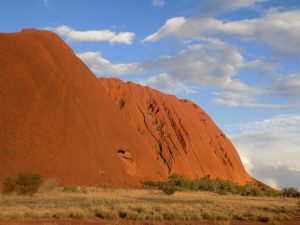
Uluru is 348 metres (1142 feet) at its tallest point and is a huge slab of rock that continues below the ground for possibly 5 to 6 kilometres (3 to 4 miles). Ayers Rock which was named by the first European explorer to see it in 1873, was declared a national park in 1950. In 1985, Uluru and Kata Tjuta were handed back to the owners, the Anangu which lease it to Parks Australia and jointly manage as a national park. The aboriginal name as well as the European name are still used for both Uluru (Ayers Rock) and Kata Tjuta (The Olgas). The filtering effect of the earth’s atmosphere on the sun’s rays produces the color changes of the rock throughout the day. Australia, which is the second driest continent after Antarctica, calls the sparsely populated interior the Outback. Due to the reddish brown sand and location, Uluru and the surrounding area, are often referred to as the Red Centre.
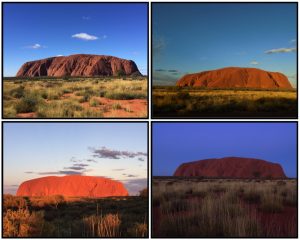
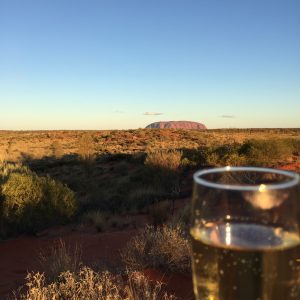
On the third night, I had booked the Sounds of Silence experience. Picked up at our respective hotels, we were driven out to a viewing platform in the desert. We enjoyed sparkling wine and canapés at sunset with views of Uluru. Tables were set up outside for a lovely buffet dinner including kangaroo! After dinner, an astronomer pointed out the constellations (Southern Cross, Centaur and Lion) along with the bright shining planets Venus and Jupiter. He had his telescope set up and we were able to see the planet Saturn including the rings. It was a dark night with a new moon and no clouds making it a perfect evening for star gazing.
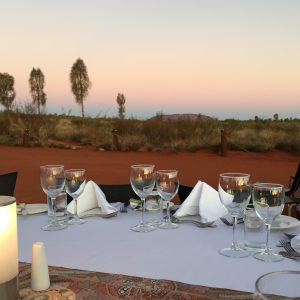
The following morning, I was picked up before sunrise by the pilot for Ayers Rock Scenic Flights who also checked us in and flew the plane. Five of us were in a 6 seater aircraft which included the pilot and we took off right after sunrise. It was a amazing flight with the early morning sun lighting the rocks a luscious watermelon red as we flew over Kata Tjuta (The Olgas) and Uluru (Ayers Rock). A highlight for me and quite enjoyable!
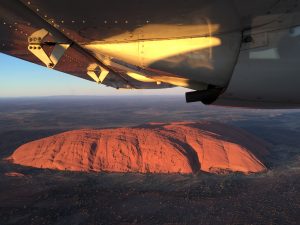
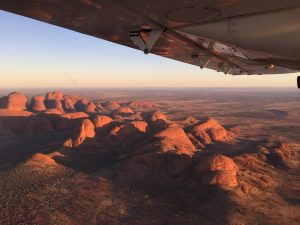
The tours from Yulara into Uluru National Park were quick. My first night, after the Mala car park stop, was a very fast drive around the Uluru and then viewing at the sunset car park with coaches leaving right after the sun went down. It felt too rushed and I wanted to explore at my own pace. After my scenic flight, I picked up a rental, a nice Mitsubishi SUV, with only 4200 kilometres. The Park pass I purchased on my Uluru Sunset Tour was good for four days. I drove into Uluru National Park and went to the Cultural Centre, strolled along the Mala Walk and took a leisurely drive around Uluru, stopping as I desired to admire the views. I went to the sunset car park in the evening and took my time viewing and taking photos before and after sunset. A much better experience for me.
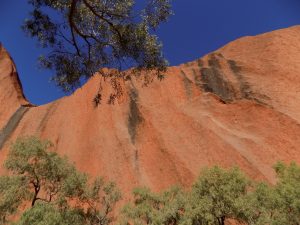
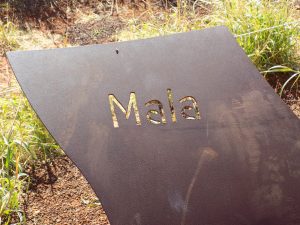
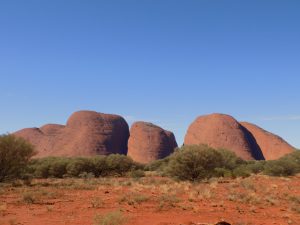
The next morning, feeling independent and adventurous, I drove out to Kata Tjuta (The Olgas), comprised of 36 rock domes creating enchanting gorges. I opted to take the Walpa Gorge trek, rated a 3 due to uneven ground but worth it as I was able to walk in and be embraced by the vertical rock walls of Kata Tjuta. As I sat all alone in the silent gorge with just my thoughts, I wondered…if the Red Centre is the heart of Australia, does it provide life flowing energy to those that see and experience this unique place? I decided to take the opportunity to let go of my own life expectations in a situation that I had been holding in my heart for too long.
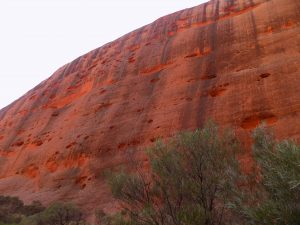
As I drove back, I saw the Valley of the Winds and stopped at the Tjuta Dune viewing platform. In the distance, I could see the sun’s rays breaking through the clouds and casting light onto Uluru which appeared a deep violet color that was difficult to photograph but has stayed in my mind.
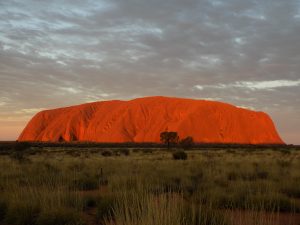
Waiting at the Sunset Car park under a cloudy sky, I was reading the book ‘Tracks’ by Robyn Davidson. I was here, looking out to a place she had traveled on her journey across the Australian outback. In overcoming her fears and realizing a goal she set for herself, many of her feelings and thoughts resonated with me. Perhaps it was choosing or being faced with situations that scared me and discovering my strengths as she did. I have learned about love and compassion on my journey as well and her words expressed what I was feeling; ‘I had learnt what love was. That love wanted the best possible for those you cared for even if that excluded yourself.’ The sun finally broke through the clouds at sunset and Uluru glowed as if lit from the inside. A perfect finale for my visit.
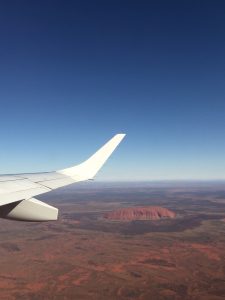
Flying out of Ayers Rock Airport the next afternoon, headed east to Sydney, I was seated on the right side of the plane but we were much further away from Uluru. No worries…I had been there, communed with it and let it touch my heart. It will continue to remind me of the love and strength I’ve come to understand connects us all. Perhaps experiencing the awe and energy of the Red Centre is a journey into the heart.